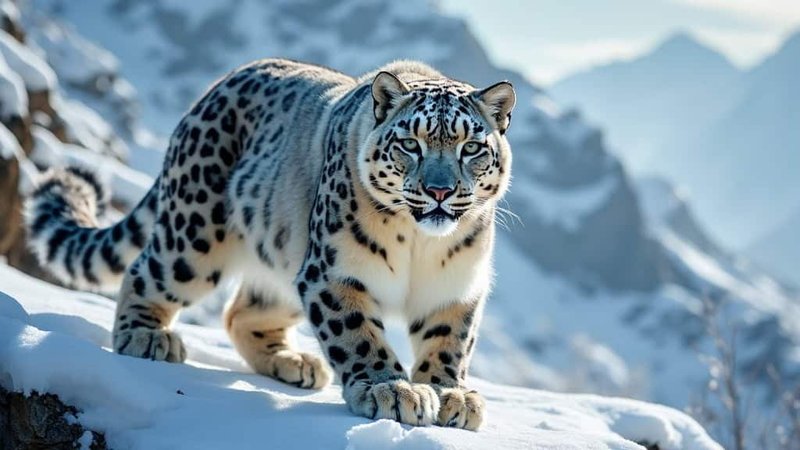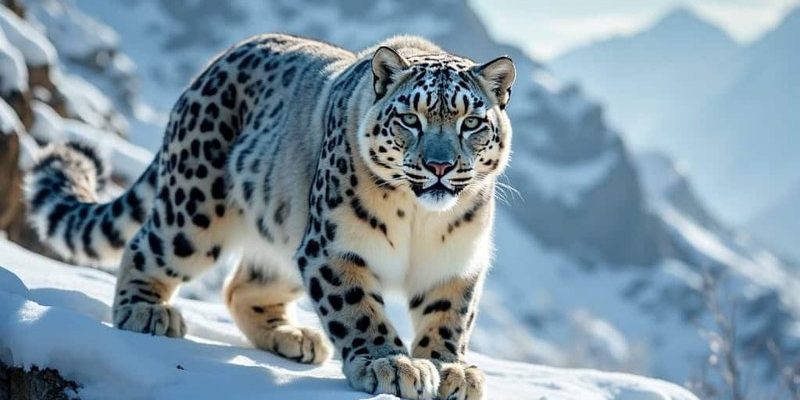
If you’re curious about how the snow leopard came to be, you’re in good company. Think of it like tracing your family tree. Just as we can look back at our ancestors to understand where we came from, scientists study the history of snow leopards to uncover how they evolved. Their journey is filled with surprises and insights about nature and survival in a world that is constantly changing.
Where It All Began: The Origins of Big Cats
To truly understand the evolutionary history of the snow leopard, we have to go way back—around 10 to 15 million years ago. This is when the big cat family, known scientifically as the Felidae family, started to branch out. Imagine a giant family tree where the snow leopard is just one of the many branches. The common ancestor of today’s big cats roamed the Earth, and over time, different species adapted to their environments.
One important branch of this family tree leads to the snow leopard. Around 4 to 5 million years ago, these ancestors began to wander into the harsh mountain ranges of Central and South Asia. It’s pretty cool to think about how these early cats were shaped by their surroundings, much like how we adapt to our unique environments.
They evolved to become larger and more agile, which came in handy for navigating rocky terrains and deep snow. But here’s the kicker—the adaptations didn’t stop there. As the climate changed and habitats transformed over millions of years, the snow leopard picked up even more traits that would help it thrive in cold, mountainous areas.
The Ice Age: A Turning Point for Snow Leopards
Fast forward to the last Ice Age, and you’ll see major changes that would impact many species, including the snow leopard. The Earth was much colder, and vast areas were covered in ice. Snow leopards had to adapt to these frigid conditions. Imagine being a cat that can’t just curl up under a warm blanket; survival meant evolving to stay warm and hunt effectively.
During this time, snow leopards developed their iconic thick fur coats, which not only kept them warm but also helped them blend into their snowy surroundings. This camouflage, similar to a white-out in a snowstorm, allows them to sneak up on prey without being noticed. Here’s the thing: they also developed long tails that help them balance on steep cliffs and navigate tricky terrains.
The cold climate wasn’t just a challenge; it also shaped their prey. As animals adapted to survive in icy conditions, snow leopards became expert hunters. They evolved into skilled stalkers, using their keen eyesight and sharp hearing to track down prey like ibex and sheep. It’s fascinating how every adaptation served a purpose in their survival.
Genetic Connections: The Snow Leopard’s Close Relatives
You might be wondering how the snow leopard fits in with its feline cousins. Well, recent genetic studies have shed light on this. Snow leopards are closely related to a group of big cats known as Panthera, which includes lions, tigers, and leopards. But here’s where it gets interesting: despite sharing similarities, snow leopards branched off from the main Panthera line around 3 to 4 million years ago.
This separation led to some unique traits. For instance, snow leopards have a different vocalization pattern compared to their relatives. Instead of roaring like lions or tigers, they produce a range of sounds, including a special “sawing” call that echoes through their mountainous homes. Imagine it as their way of saying, “I’m here, and I’m ready to hunt!”
Understanding these genetic connections not only helps scientists track the snow leopard’s evolution but also highlights the importance of conserving these magnificent creatures. As they face threats from climate change and habitat loss, knowing their history can help us protect their future.
Modern Challenges: The Impact of Environmental Change
As the evolutionary history of the snow leopard continues, we find ourselves at a critical juncture. These big cats face significant challenges in the modern world. Climate change, habitat loss, and human-wildlife conflict are just a few of the hurdles they’re dealing with today.
With rising temperatures, the snow leopards’ mountain habitats are becoming less stable. Melting glaciers and changing vegetation patterns impact their prey, making it harder for them to find food. It’s like trying to find a good restaurant in a town that’s suddenly changing overnight.
Human encroachment also poses a serious threat. As people build homes, roads, and farms in snow leopard territories, these big cats are increasingly forced out of their natural habitats. They often find themselves in areas where they can’t hunt or roam freely, making survival even tougher. Conservation efforts are underway, aimed at protecting their environment and establishing safe corridors for their movement.
Conservation Efforts: Fighting for the Future of Snow Leopards
Despite the challenges, there’s hope. Many organizations and researchers are dedicated to preserving the snow leopard and its habitat. They’re working tirelessly to create strategies that promote coexistence between snow leopards and local communities.
One effective approach is community-based conservation. By involving local people in conservation efforts, they can benefit from protecting the snow leopard. This might include eco-tourism initiatives that provide income while showcasing the beauty of these big cats. It’s a win-win situation where both the snow leopards and locals benefit from keeping the ecosystem intact.
Additionally, researchers are wearing multiple hats—scientists, advocates, and educators—to spread awareness about the importance of snow leopards. The more we understand their evolutionary history, the more we can appreciate their role in the ecosystem. By sharing knowledge and highlighting their cultural significance to local communities, we foster a sense of stewardship that can lead to lasting change.
The Importance of Snow Leopards in Ecosystems
Snow leopards play a crucial role in their ecosystems. As apex predators, they help maintain the balance of prey populations, which in turn influences the entire food chain. Without them, the dynamics of their habitats could be thrown off balance, leading to overpopulation of certain species and a decline in vegetation.
Think of snow leopards as the guardians of their mountain homes. They manage the herbivore populations and keep them from overgrazing the land. This ensures a healthy ecosystem where various species can thrive together. It’s a beautiful dance of nature, and snow leopards are a central part of that performance.
Understanding this interconnectedness reinforces the need for conservation. Protecting the snow leopard isn’t just about saving a single species; it’s about preserving an entire ecosystem. When we invest in their survival, we’re also investing in the health and vitality of the environment they inhabit.
The Path Forward: Embracing Awareness and Action
As we wrap up our exploration of the evolutionary history of the snow leopard, it’s clear that these remarkable creatures are more than just beautiful animals. Their story is a testament to resilience, adaptation, and the ongoing struggle for survival in a changing world.
Now, it’s up to us to take action. Whether it’s supporting conservation initiatives, spreading awareness, or simply appreciating the snow leopard’s beauty from afar, every little bit helps. By coming together to protect these big cats, we not only honor their evolutionary journey but also ensure that future generations can marvel at their elegance in the wild.
So, the next time you think of snow leopards, remember their incredible history and the challenges they face. Let’s work hand in hand to ensure that these majestic cats continue to roam the mountains for years to come.

